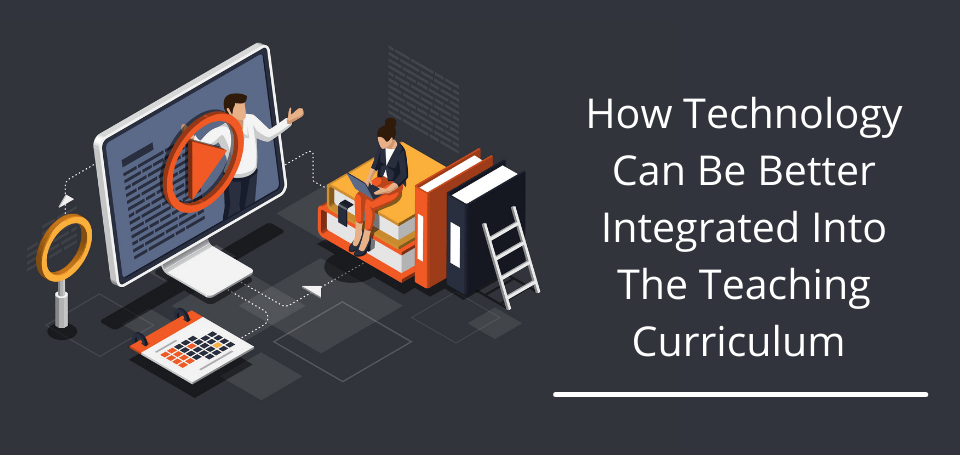Technology integration is the blending of technology-based teaching strategies into the teaching curriculum programmed to get students to acquire, organize, and demonstrate information. This is known as technology integration.
Technology, when integrated into the curriculum, revolutionizes the teaching system. Studies show that technology integration in the curriculum improves learning processes and results. Teachers who recognize computers as significant tools that can change the way they teach.
Integrating technology into classroom guidance means more than teaching essential computer skills and software programmers in a different computer class. Effective tech integration should occur across the curriculum in ways that research shows lead to a thorough and advanced learning system. Specifically, it should support four key components of learning: dynamic engagement, cooperation in groups, frequent interactions and feedback, and connection with experts in real-time.
The objective of technology integration is to have students use technology responsibly and safely to obtain, demonstrate, apply, and communicate information. When advanced technological creative technologies, for example, 3D printers, easy-to-use design software, and certain desktop machine devices are used in the curriculum as they can encourage creativity and innovation among students and help them move closer to modern science, technology, engineering, and mathematics by means of various methods.
Technology helps change the student/teacher roles and relationships: students become liable for their learning results, while teachers become guides and facilitators. Technology lends itself as a multidimensional tool that helps the process. For economically disadvantaged students, the school might be the only spot where they will have the potential chance to use a computer and integrate technology into their learning. For additional equity, access, and digital inclusion, when integrated into the curriculum, technology tools can extend learning in powerful ways.
These tools can provide students and teachers with:
- Access to the updated essential source material
- Methods for gathering and recording data
- Ways of collaborating with students, teachers, and professionals
- Opportunities for expressing understanding by means of multimedia
- Discovering is relevant and evaluation is authentic.
- Training for publishing and presenting their new knowledge,
- The following are a few tips for teachers to use the accessible digital resources in the most effective way.
If your class has an interactive whiteboard and a projector,
- Try interactive websites.
- Dig into Scholastic's whiteboard exercises page.
- Show online recordings related to the lessons.
- Explore virtual math manipulatives.
- Check out the native software that came with the board.
- Use the video conferencing tools to connect past the classroom.
If there is just a single computer in your room,
- All of the above mentioned, and more
- Assign a single student to be the class recorder and take notes.
- Start a collaborative class blog.
- Check it out at the video conferencing network website.
- Try a collaborative multimedia conversation tool.
- Allow students access to access, review, or intervention materials on a rotating schedule.
- Curate resources for students.
- Build a Google Site to house the class content.
- Encourage skills practice, research, or the creation of collaborative stories using Google Docs.
- Record screen casts to provide onscreen guidance.
Benefits
Finding the right balance is important to understand the full scope of positive results of integrating technology into your curriculum. It is simply a waste of time to fuse technology with bad instructional propensities. A screen should never replace a teacher or be used to babysit students. When technology is deployed within the system of a carefully constructed lesson plan, however, it can lead to the following advantages:
- Improved student commitment
- Increased access for all students to learning opportunities
- Improved trust and stronger relationships between parents, teachers and students.
Challenges
The implementation of technology in the classroom isn't without its challenges. Many of these obstacles took center stage as schools endeavored to manage the fallout from the new pandemic. The sudden and unexpected shift to virtual learning left the teachers and students completely unprepared for an academic year spent in online classes. The most common technological challenges during COVID-19 were as per the following:
- Lack of online learning support for students
- Insufficient tech-based academic pedagogical expertise on the part of teachers
- Lack of internet availability or personal devices for students
Bottom line:
Creative learning processes are quickly making their way into the curriculum. However, it is also a requirement for the hour that this does not diminish the importance of teachers because technology should not be the only tool used to aid academic learning. Any educational foundation should confirm their needs and a way to know how to use technology to guarantee that it will not take over the significance of the classroom.
Thanks
Vikas The Concept School | +91 7702900900 | www.vikasconcept.com

